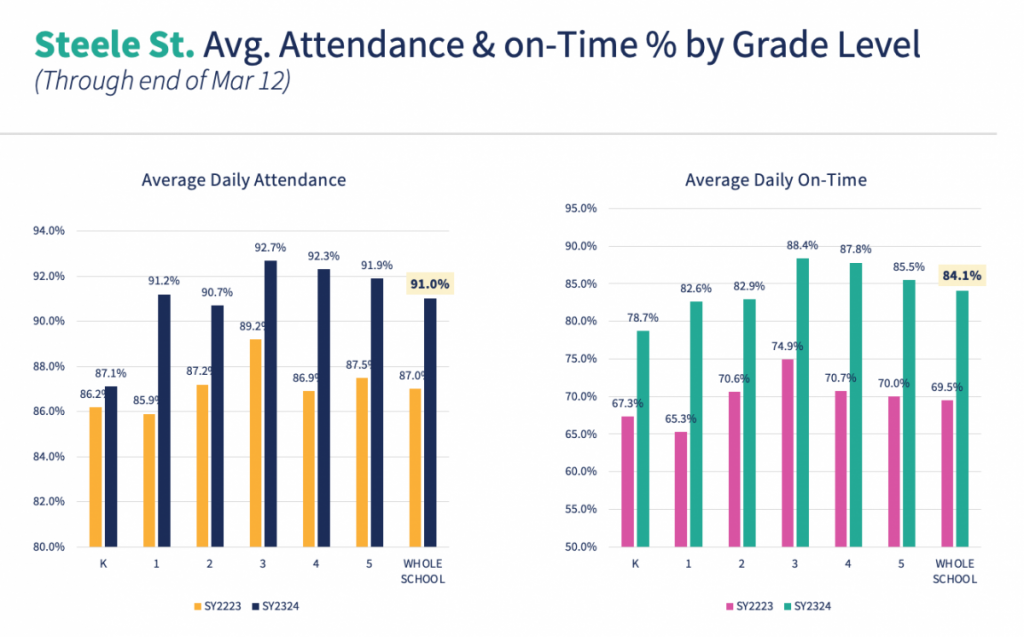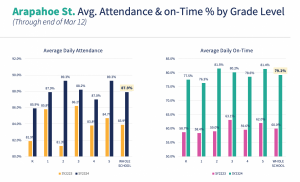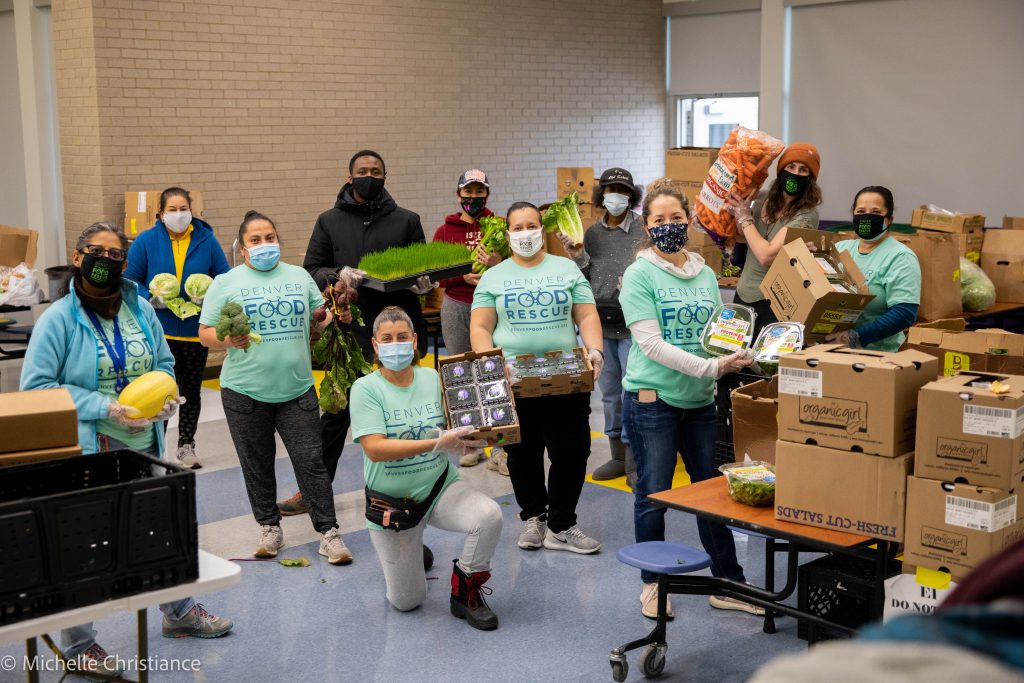According to the U.S. Department of Education, in the 2021- 22 school year, over 14 million students were chronically absent in the U.S. and in a recent report released by the Colorado Department of Education, 31% of students, nearly 270,000, were chronically absent last school year.
In Denver Public Schools, the chronically absent rate is 41% and that number increases for students of color, low-income students, multilingual learners, and students with disabilities.
CDE noted that many students blamed anxiety and feeling unsafe at school for reasons not to attend, but a recent New York Times article also cites a fundamental shift in the culture of school. Something that was once deeply ingrained — attending school – now feels optional to some students.
“It used to be a simple, shared agreement,” said University Prep Chief Operating Officer Alastair Dawe. “School doors open, and children pour into the building. But the world is more complex today and different people need different supports just to get to school. We must not only get back to a world where school is not optional, but we must provide differentiated support and motivation necessary to make that possible.”
University Prep, like many in the Denver-metro area, saw attendance rates drop significantly following the pandemic. In a planning meeting last year, the charter school network’s leaders examined what key metrics led to better outcomes for students. Attendance was front and center.
What came out of that meeting was a codified version of the protocols and expectations around attendance for both staff and families. Their goal was to have at or above 92% daily attendance rate across both campuses.
 So far this year, attendance at the Arapahoe Street campus stands at 87.9%, and at the Steele Street campus it’s 91%. Both those figures are four percentage-points above the previous year.
So far this year, attendance at the Arapahoe Street campus stands at 87.9%, and at the Steele Street campus it’s 91%. Both those figures are four percentage-points above the previous year.
The “No More Than Five to Thrive” campaign established incentives designed to energize the community around a shared focus: Miss no more than five days each semester to be on track for attendance success. Alongside that, it put into place an escalation system to support families who are challenged to meet the goal.
The escalation process moves through tiers of support that elevate who is getting involved and the depth of that involvement. While minimal absences might trigger phone calls from teachers and a revisiting of the campaign including a discussion of why attendance is so important, additional absences prompt greater efforts.
These can include one-on-one meetings with the principal or home visits with members of the leadership team. The purpose of the heightened engagement is not punitive, but to further unpack what is preventing attendance success.
This is when significant effort goes in place to make community resource connections such as transportation, housing and mental health services. All along, the message remains clear — attendance is vital for children to develop their social-emotional and academic knowledge and skills. And it’s a habit that has to stick in elementary school or the consequences become far dire later in the K-12 journey.
The 2022-23 school year was the first year of implementation, so coming off a successful first year, the network realized there were still gaps to fill. They hired a Family Liaison Manager at each campus whose primary role is to forge relationships with families and try to understand the underlying issues related to attendance and share resources that best support them. The role is all about building connections and trust, Dawe said.
“We are intentionally tracking everything to see what is and isn’t working for students. We set up a dashboard with grade and classroom level data to give teachers a clear picture about absences and tardies so we can effectively follow through with the support needed for families,” he said.
The Family Liaison Managers track all attendance data at each campus and helped launch the “No More than Five to Thrive” campaign this past school year. They also lead the escalation protocol when absences start building up for a student. It’s a combination of getting clear on the expectations, incentivizing and motivating, and implementing tiered support to ensure the school is helping students get what they need to hit their goal.
“Students get weekly and monthly incentives, but we also wanted to recognize the caregiver’s role in achieving this goal. We host a breakfast reception each semester for families of students who hit their goals and celebrate with food, t-shirts, and gift baskets. It certainly isn’t easy to be a caregiver, and this is our way of acknowledging their part in the success of their students,” Dawe said.
Overall, University Prep has seen a not only the 4 percentage-point increase in average daily attendance at both campuses, but also a more than 17 percentage-point increase in timeliness. It’s one thing to be at school each day, but children also have to be on time, ensuring they don’t miss critical instruction.
Schools are facing a climate that didn’t exist five or 10 years ago where educators must work with families on the core notion that coming to school is important and a standard way of operating. University Prep set out to support the skill development of teachers around this issue in recognition of the shifting landscape.
“Our teachers are great educators, and they care deeply about the children and families we are serving. We have to support them in understanding the different experiences our families are facing and how to respond with empathy and love while still holding the line around enforcing expectations,” Dawe said. He stressed the importance of those relationships and how that has helped reduce absences.




